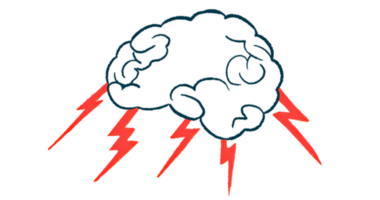My journey with deep brain stimulation for Parkinson’s, part 3
A columnist describes what her second DBS surgery was like

Note: This column describes the author’s own experiences with deep brain stimulation surgery. Not everyone will have the same response to the procedure. Consult your doctor before considering any particular therapy or treatment.
Third in a series. Read parts one and two.
In part two of this series, I left off just before I headed back to the hospital for my second deep brain stimulation (DBS) surgery. It was late October 2019, and I’d just spent a week recovering from my first surgery at home. I was still experiencing the “honeymoon” period, or microlesion effect, in which some Parkinson’s patients experience significant but short-term relief from symptoms like rigidity, tremors, and slow movements.
There I was, back in my hospital gown in a chilly preoperative bay at 6 a.m. This pre-op was a piece of cake compared with the first surgery. No head shaving, no scary stabilizing halo being attached to my skull, no MRI, no having to stay awake. This time, I didn’t remember a thing between the anesthesia doctor telling me to breathe deeply and being wheeled into the recovery area.
This surgery entailed inserting the actual stimulator devices and batteries in my chest. I have a Medtronic system implanted, and my procedure called for two devices and two wires — one on the left side of my brain to control the symptoms on the right side of my body, and vice versa. My doctors and I had also decided on a nonrechargeable battery, meaning I wouldn’t have to charge my device daily or weekly, but I’d need to have the batteries in my chest surgically replaced in a few years (which I did in November 2023).
Before my surgeries, I’d heard my doctors refer to the process of installing the wires as “tunneling” from my scalp to my chest. I kept thinking that seemed like a harsh word for the process. Couldn’t they say “placing” or something? As I woke up in recovery, I suddenly understood the choice of words.
The effects of DBS surgery No. 2
I’d been so worried about the actual brain surgery part of the process that I never thought to ask what the second surgery would feel like. In a word, I was sore. All over. While not as high-risk as being poked in the brain, this surgery left me with nearly 40 staples in my scalp, running in two parallel lines. They ran from the caps in my skull that filled the holes the surgeon had drilled and helped hold the electrodes in place on the back of my head. Somewhat surprisingly, my scalp didn’t hurt that bad. It turns out that while there are plenty of blood vessels in the scalp, there aren’t that many nerves to feel pain.
I also had two scars on my chest, about 3 inches long, just below my collarbone. That was where the ache centered, as the surgeon had to move muscle and tissue to fit in the actual devices. Not to mention whatever they did to “tunnel” (I’m still afraid to ask or Google it) from my skull, down behind my ears, and into my chest with the wire. For a few days, I felt like I’d been kicked in the chest by a horse or something.
I’ll say something about my chest scars. I know some people, particularly women, are worried about the scarring from DBS. My scars were nicely closed and secured with internal dissolving sutures and skin glue to help minimize scarring. If you’re worried, ask your surgeon how they close the chest incision.
My scars have faded quite a bit, but they still get itchy or reddish sometimes, and in certain positions, you can see the outline of the devices under my skin, and they’re easy to feel when you touch my upper chest. However, I consider them badges of honor. I’ve purchased shirts because they showed off my scars. And I tell anyone who asks that it’s where I keep my battery pack. It’s kind of fun to see the reactions.
This second surgery was just an outpatient procedure, so by 2 p.m. that same day, we were headed home. I had plenty of pain meds to handle the aching and my supersoft hat that had been so useful after surgery one. I didn’t feel as good as I did when I left the hospital after the first surgery — when I had little pain and the symptom-easing honeymoon was kicking in. But I figured the hard part was over.
Instead, in the coming days, my honeymoon period would come to a crashing halt. Check back next week to read about how the wait to turn on the DBS system became a white-knuckle ride.
Note: Parkinson’s News Today is strictly a news and information website about the disease. It does not provide medical advice, diagnosis, or treatment. This content is not intended to be a substitute for professional medical advice, diagnosis, or treatment. Always seek the advice of your physician or another qualified health provider with any questions you may have regarding a medical condition. Never disregard professional medical advice or delay in seeking it because of something you have read on this website. The opinions expressed in this column are not those of Parkinson’s News Today or its parent company, Bionews, and are intended to spark discussion about issues pertaining to Parkinson’s disease.







Gerald McCarty
My experience last November was way different. I was asleep for my MRI and both surgeries and didn’t have to have a halo screwed to my skull. The actual brain surgery was without any complications. The overnight stay was almost torture as I had no easing of symptoms after surgery and the hospital cafeteria only delivered food on a schedule that didn’t fit my med schedule. My implant surgery in my chest was an outpatient procedure that was easier except I had to recruit my sister to take me to the hospital since my care partner had come down with a horrible illness. I wore a surgical cap for a month after while slowly getting back to my exercise regiment. I can happy with the results, f I have bumps on my forehead that look kinda like a baby goat horn buds. The wire running down my neck seemed too tight for the first few weeks, but I’m used to it now. I now have one week before my MDS upgrades me to Adaptive DBS. I will then be part human and part machine with AI algorithms stimulating my brain as is needed. What a time to be alive!
beryn Petersen
Great to read your story Mollie. Just to add to the record I was diagnosed in 1999, aged 59, and had a DBS in 2014. It was a scary prospect leading up to the big day, but I had the instant effect you see in all the videos. No l looking back, it made a tremendous difference to my standard of living. Now aged 83, I now have deteriorating speech and have some problem with my mobility - this varies from day to day but given the circumstances, I'm not complaining. I would recommend DBS to anyone deemed suitable and wish them all the best.
Neil Scheffler
I had DBS surgery about four months ago. I had no pain at all, except some minor chest soreness after the second procedure. I also elected to have the rechargeable battery. It’s really not a big deal to recharge while watching TV for a half hour. To me, it’s really a no-brainer as opposed to having another surgery periodically to change the battery. i’m just sorry I did not have it years ago.
Gary Passmore
Wondering if you think what you had to go through, was it worth it?
Also can you please let us know what improvements you have to date.
Thanks cheers Gary
Chip Kudrle
Hello Mollie- thank you for sharing your journey through DBS. I pray that this surgery/procedure brings you a higher quality of life as you battle this terrible disease! My wife was diagnosed with Parkinson's at age 57. 5 years later, she continues to experience painful dyskinesia and seems to not be able to tolerate Levodopa/carbidopa in any form/dosage we try. We are considering DBS and are following your journey very closely. Thank you again for your reports and your courage!